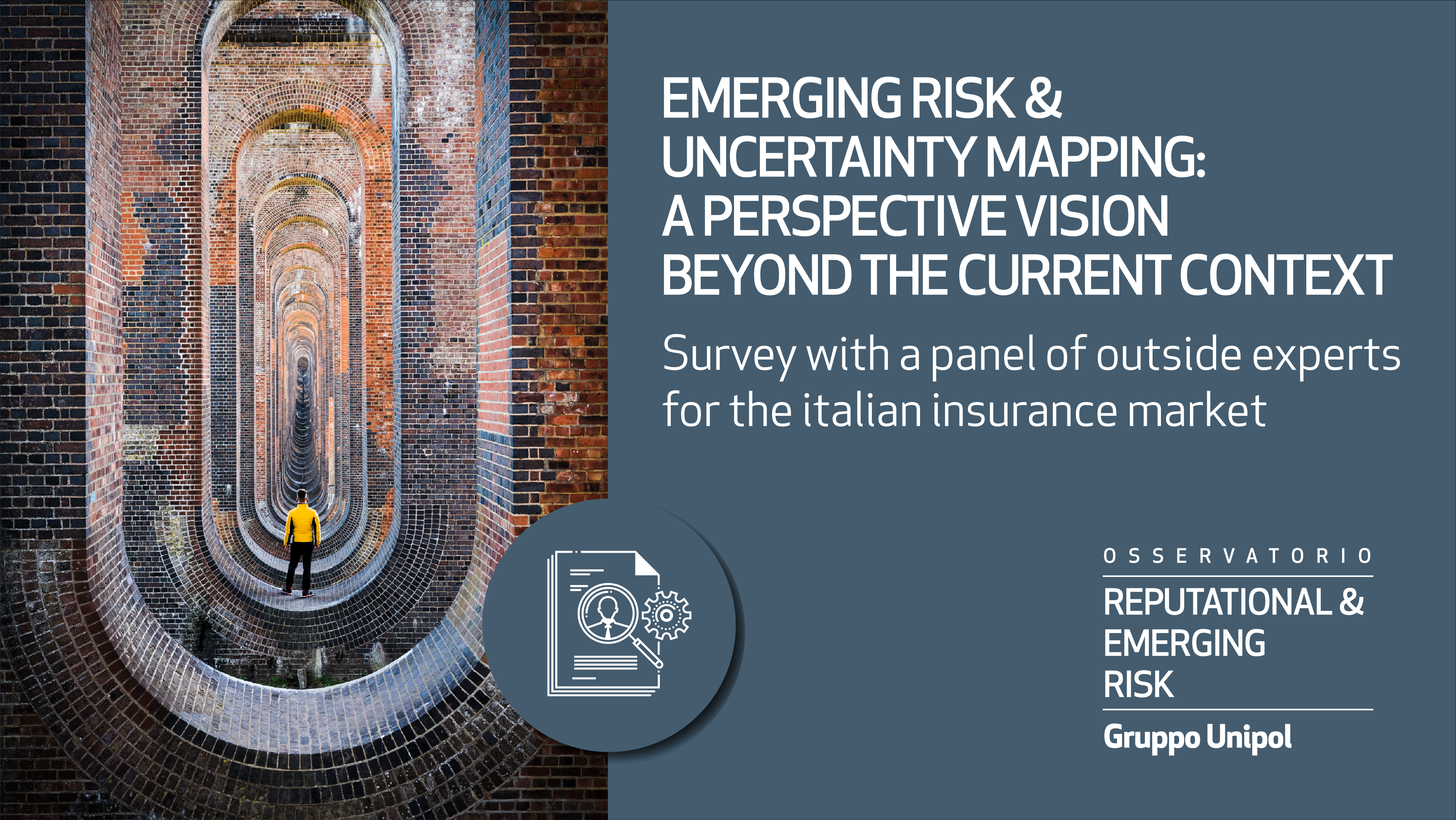
Survey with a panel of outside experts for the Italian insurance market
The 2022 edition of the survey was also carried out on the 6 emerging risk areas that resulted from a systemic analysis of the macro trends on the Group’s Radar.
The Observatory decided to explore the 6 areas of risk, setting up a panel of outside experts from the world of academia, research centres or opinion leaders for each cluster.
They made their contributions through a survey aimed at finding out the time period, probability of occurrence, potential impact on the Italian insurance sector and the interconnections between the risks. Compared to the 2021 edition, a new risk was added to the Economy and Finance cluster linked to the current geopolitical situation. A question was also added relating to possible new emerging risks “to watch”.
Even though the results described in this edition reflect the specific nature of the current situation in which the survey was made, they are strongly forward-looking and still keep the long-term challenges that we will have to face in coming years on the Radar.
Macro-cluster of emerging risks